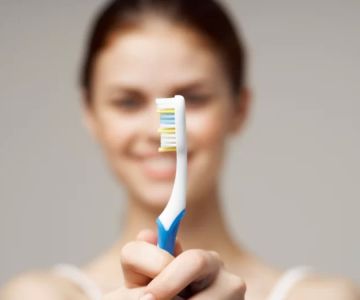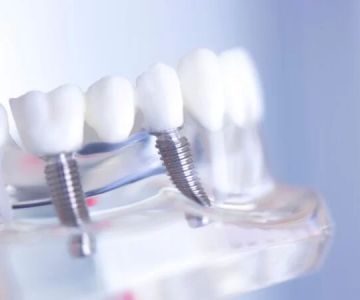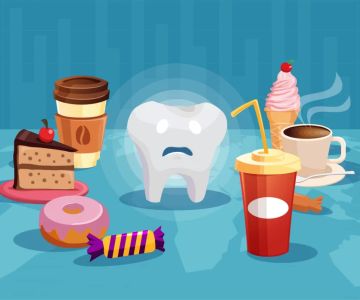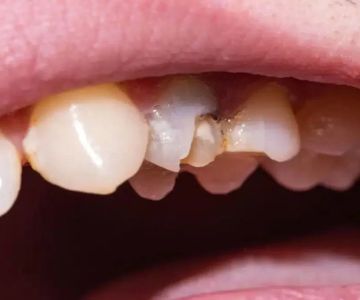Experiencing tooth pain after a dental filling can be concerning, but it is not an uncommon issue. After undergoing a dental procedure, it is natural to wonder why discomfort may linger, especially when a filling is supposed to help resolve existing tooth issues. While most discomfort typically fades after a few days, understanding the potential causes of tooth pain after a dental filling is essential to determine whether your experience is part of a normal recovery process or if additional treatment may be needed.
In this article, we will explore the various reasons behind tooth pain after a dental filling, as well as the steps you can take to address this issue. Whether you're dealing with temporary sensitivity or more prolonged discomfort, this guide will help you understand what might be happening and when to seek professional advice. By the end, you'll know more about managing the discomfort and what to do next to protect your oral health.
1. Understanding Dental Fillings and Why Pain May Occur
A dental filling is a common procedure used to restore a tooth that has been damaged by decay. The dentist removes the decayed portion of the tooth and then fills the cavity with a material such as amalgam, resin composite, gold, or porcelain. Fillings help protect the tooth from further damage, restoring its structure and function.
However, it’s important to understand that even after a filling, the tooth may remain sensitive for a short time. This sensitivity could be due to various factors related to the procedure or the type of material used. Pain after a filling is usually temporary, but if it persists or worsens, further investigation might be needed. Let’s dive deeper into the potential causes of pain following a dental filling.
2. Common Causes of Tooth Pain After a Filling
There are several potential reasons for tooth pain after a dental filling. Some causes are more common than others, and understanding them can help you determine whether your pain is part of the normal healing process or something that requires professional attention. Here are some of the most common causes:
- Post-Procedure Sensitivity: It’s natural to experience some level of sensitivity after a dental filling, especially to hot or cold foods and beverages. This is often due to the filling material, the procedure itself, or the tooth’s recovery from the decay.
- Improper Bite Alignment: If the filling is too high or does not fit perfectly with your bite, it can cause pressure on certain areas of the tooth. This discomfort may lead to persistent pain, especially when chewing or biting down.
- Inflammation of the Tooth Nerve: When a cavity is deep, the filling can sometimes irritate the nerve inside the tooth. This inflammation can cause tooth pain that lingers after the procedure.
- Cracked Tooth: In some cases, the tooth may have a small crack that wasn’t visible before the filling was placed. This crack can cause pain when pressure is applied, such as during chewing.
- Filling Material Issues: If the material used for the filling shrinks, cracks, or wears down unevenly, it could lead to discomfort. Some materials may also cause allergic reactions in rare cases, leading to pain or irritation.
- Underlying Infection: In rare cases, a tooth may still have some infection after the cavity is filled, especially if the decay was near the nerve. This infection can lead to continued pain or discomfort, requiring further treatment.
3. How Long Should Tooth Pain Last After a Filling?
Most patients experience mild discomfort or sensitivity after a dental filling, and this should resolve within a few days. If the pain persists for more than a week or worsens, it could be a sign that something more serious is going on. The length of time pain lasts can vary depending on the individual, the complexity of the filling, and the location of the cavity.
For temporary sensitivity, it’s often recommended to avoid very hot or cold foods and beverages until the pain subsides. However, if you find that the pain doesn’t improve or if it becomes sharp or throbbing, it’s important to contact your dentist for further evaluation. Prolonged pain could indicate an issue like an infection, nerve damage, or an improperly fitted filling.
4. Managing Tooth Pain After a Dental Filling
If you're experiencing tooth pain after a filling, there are a few things you can do to manage the discomfort until you can visit your dentist:
- Avoid Triggering Foods: As mentioned, foods and beverages that are too hot, cold, or acidic can trigger pain after a dental filling. Stick to soft, room-temperature foods until the sensitivity goes away.
- Use Over-the-Counter Pain Relievers: Nonsteroidal anti-inflammatory drugs (NSAIDs) like ibuprofen can help reduce pain and inflammation. Always follow the dosing instructions and consult your dentist if you need further advice.
- Good Oral Hygiene: Keep your mouth clean and follow your dentist’s instructions for brushing and flossing. Avoid putting unnecessary pressure on the treated area while brushing.
- Cold Compress: Applying a cold compress to the outside of your cheek can help reduce swelling and numb the area temporarily, providing relief from discomfort.
5. When to See a Dentist About Your Tooth Pain
While mild pain or sensitivity after a filling is usually nothing to worry about, there are certain signs that you should look out for that indicate you may need to visit your dentist:
- Persistent Pain: If the pain continues beyond a few days or increases in severity, it could signal a problem with the filling, an infection, or nerve damage.
- Severe Pain: Sharp, throbbing, or severe pain should never be ignored, as it may indicate that the tooth is infected or that the filling has failed.
- Discomfort When Chewing: If the pain worsens when chewing or biting down, it may suggest that the filling is improperly aligned or that there’s an issue with the tooth’s structure.
6. Preventing Future Tooth Pain After Fillings
After experiencing pain following a dental filling, you might wonder how to prevent similar issues in the future. Here are a few tips to ensure your dental fillings last longer and that you avoid unnecessary pain:
- Follow Your Dentist's Recommendations: Always follow your dentist’s advice on aftercare and follow-up visits to ensure that the filling heals properly and remains intact.
- Maintain Good Oral Hygiene: Regular brushing, flossing, and the use of mouthwash can help prevent new cavities from forming, reducing the risk of needing further fillings.
- Regular Dental Check-Ups: Regular visits to the dentist will help catch any issues early before they turn into more serious problems. Your dentist can also check for signs of filling wear or potential complications.
7. Conclusion: How to Address Tooth Pain After a Filling
Tooth pain after a dental filling can be frustrating, but it’s usually temporary. The most common causes include post-procedure sensitivity, improper bite alignment, and nerve inflammation. If the pain persists or becomes severe, it’s crucial to see your dentist as soon as possible to rule out any underlying issues.
If you're experiencing tooth pain after a filling or need advice on oral health, don’t hesitate to contact a professional. At Dentistry Toothtruth, we offer expert guidance and products that can help you maintain optimal oral health.
SEO Title: Causes of Tooth Pain After Dental Filling – What to Do
SEO Keywords: causes of tooth pain after dental filling, tooth pain after filling, dental filling pain, filling discomfort, tooth sensitivity after filling
SEO Description: Discover the common causes of tooth pain after a dental filling and learn what steps to take to alleviate discomfort. Understand when to see a dentist for persistent pain.







 Westgate Dental Arts
Westgate Dental Arts Coventry Family Dental
Coventry Family Dental Familia Dental
Familia Dental Dr. Daniel S. Fife, DDS
Dr. Daniel S. Fife, DDS Dentistry At Suburban Square: Michael I. Wollock, DMD
Dentistry At Suburban Square: Michael I. Wollock, DMD Comfort Care Dental
Comfort Care Dental The Importance of Oral Health Education During Pregnancy for a Healthy Pregnancy
The Importance of Oral Health Education During Pregnancy for a Healthy Pregnancy Why Skipping Dental Checkups Can Lead to Bigger Oral Health Problems
Why Skipping Dental Checkups Can Lead to Bigger Oral Health Problems Best Tips for Brushing Your Teeth Properly for Healthy Gums: Essential Techniques for Oral Health
Best Tips for Brushing Your Teeth Properly for Healthy Gums: Essential Techniques for Oral Health Advantages of Porcelain Dental Restorations
Advantages of Porcelain Dental Restorations How Can Diabetes Cause Tooth and Gum Problems? Preventing and Managing Oral Health Issues
How Can Diabetes Cause Tooth and Gum Problems? Preventing and Managing Oral Health Issues Healthy Habits for Promoting Good Oral Health and Hygiene: Tips for a Healthy Smile
Healthy Habits for Promoting Good Oral Health and Hygiene: Tips for a Healthy Smile